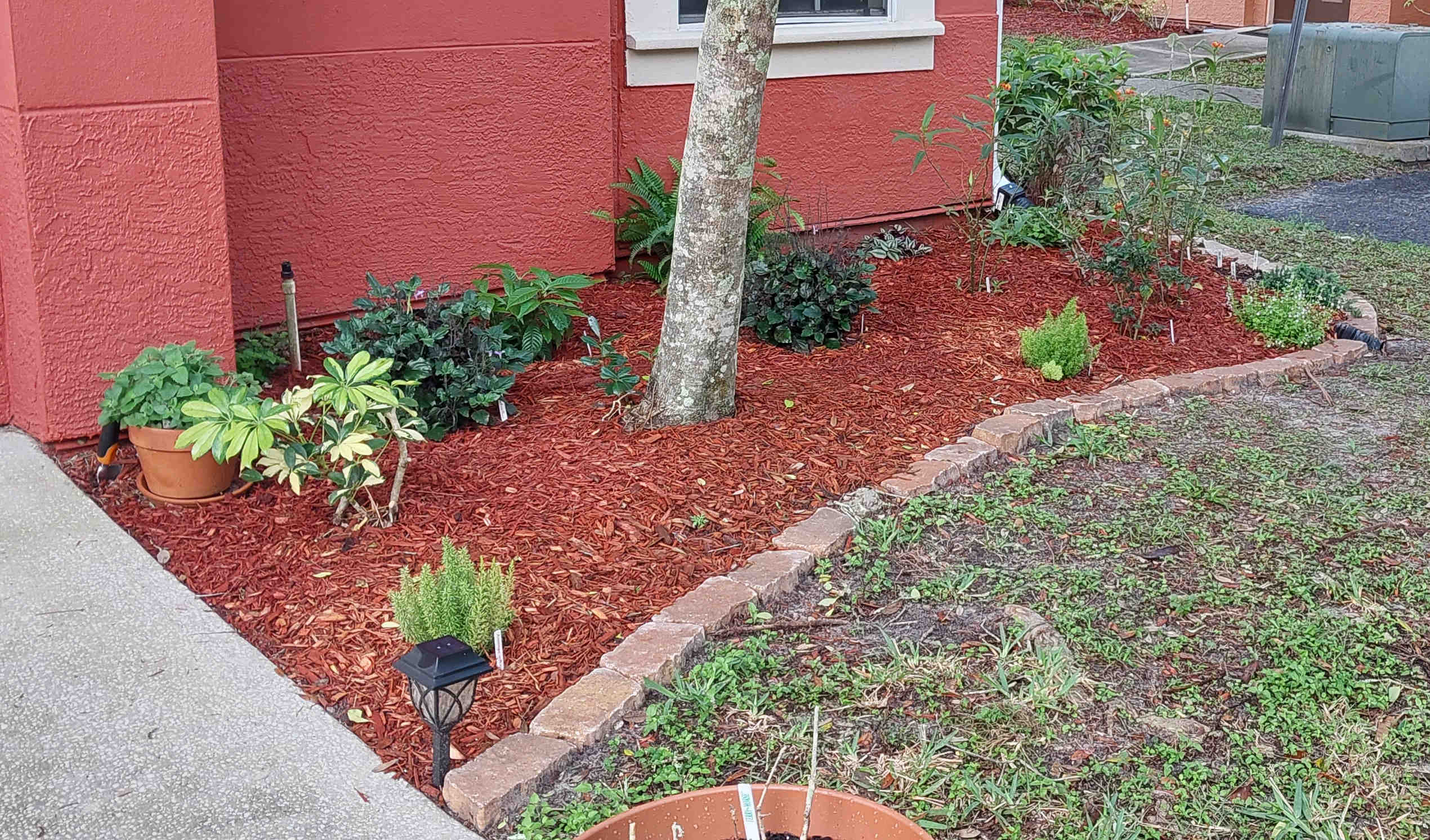About My Garden
My garden is just a small patch of land outside the condo my wife and I call home. It's located in USDA hardiness zone 10a (actually, right on the border of 9b and 10a) in Florida, USA, and I've been trying to beautify the space with a mixture of native and non-invasive ornamental shrubs, herbs, and other plants. While currently there are quite a few non-native species, I'm trying to slowly migrate to entirely native plants and non-invasive food crops, especially those that can help rebuild the soil quality; it's pretty much just sandy clay here.
If you'd like to leave feedback about the garden, or to request seeds, cuttings, please do contact me via the info on my contact page. I generally try to keep a supply of seeds for as many of my plants as possible, but as always, it depends.
Also, if you're in need of some advice for designing or improving a garden in Florida or around zones 9b/10a, I'd be happy to help!
Table of Contents
- Species
- Hardscaping
Hardscaping
As you may have noticed from the large-scale image of my garden at the beginning of the page, I've made a custom border for my cultivation area using some cheap stones from the hardware store and "paver base" gravel. It's actually a really simple and effective way to give your garden more character. Here's my basic steps for putting in a border.
-
Measure out the approximate distance of your border using string, sticks, or anything else you can find. This way, you'll be able to estimate how many stones or bricks you'll need to buy.
-
Use a shovel to roughly dig a small trench along the path your stones will be laid. This serves as a test to make sure there are no roots, pipes, cables, or other obstructions that you might need to build around.
-
Go to the store and buy the stones or bricks you like, as well as an appropriate amount of paver base. I usually end up using one 0.5 cubit foot bag per 10 feet of border.
-
Dig out the trench for the stones properly, and dig the area about 1.5x the width of the stones to make working the area easier.
-
Use a mallet or hammer, along with a spare piece of wood or stone, to tamp down the soil at the bottom of the trench. Try to make the soil as level as possible, but don't worry if it's not perfect; the paver base gravel will smooth out the rest.
-
Pour in your paver base, and again use a mallet and flat item to tamp it down to form a flat, level base upon which to lay the stones.
-
Finally, lay in the stones on top of the paver base, tamping them lightly with your mallet to make sure they're snug.
-
Backfill the area around the stones with the dirt you dug up, and sprinkle some in between the stones as a sort of grout. I also like to pour some water from my watering can to help everything settle in.
After writing all that, I realize that it's actually not the simplest thing in the world, but if you start with maybe 6 feet of border and do it in an hour or so, you'll get the hang of it and then you can continue with the rest.





















